Moulds & Accessories
Fishing weights are used to sink the fishing line and bait to the sea, lake or river bed which in turn increases the chances of catching fish. One of the most popular types of fishing weights is the sea fishing weight used for fishing in saltwater seas. The most common materials used to make sea fishing weights are lead, tungsten, and tin. In this article, we will focus on moulds for sea fishing weights.
Moulds for sea fishing weights come in different shapes, sizes, and designs. Fishing weights come in different shapes such as round, teardrop, pyramid, and flat. Each shape has a different purpose and is used in different fishing situations. For example, flat weights are used in surf fishing to prevent the fishing line from being carried away by the waves. Pyramid weights are used in rough water to hold the bait in place and prevent it from being swept away by the current.
Moulds for sea fishing weights are made of different materials including aluminum, brass, and silicone. Aluminum and brass moulds are the most popular because they are durable and can withstand high temperatures. Silicone moulds, on the other hand, are popular because they are flexible and easy to use. They can also be used in both hot and cold temperatures.
The size of the mould is determined by the size of the desired weight. Moulds come in different sizes ranging from 1 oz to 16 oz. The weight of the moulds also varies depending on the size of the weight. As a general rule, smaller weights require smaller moulds while larger weights require larger moulds.
In addition to the shape and size, the design of the mould is also important. Some moulds have a flat base while others have a concave base. The shape of the base determines the way the weight sits on the sea bed. Flat-based weights are more stable while concave-based weights tend to roll around on the sea bed.
There are different methods of making sea fishing weights. The most common method is by melting lead and pouring it into the moulds. Lead is the most popular material used to make sea fishing weights because it is dense and heavy. It also has a low melting point which makes it easy to melt and pour. The lead is usually melted using a melting pot or a propane torch.
Other materials used to make sea fishing weights include tungsten and tin. Tungsten is denser than lead which means that it can be used to make smaller weights that are just as heavy as lead weights. Tin, on the other hand, is lighter than lead which means that it can be used to make larger weights that are not as heavy as lead weights.
Making sea fishing weights requires skill and experience. The lead needs to be melted at the right temperature and poured into the moulds at the right speed. If the lead is not melted properly, it can result in weak and brittle weights that break easily. Similarly, if the lead is poured too quickly, it can result in air pockets and uneven weights.
Moulds for sea fishing weights can be bought from fishing tackle shops or online. They can also be made at home using basic tools and materials. To make a mould at home, one needs to have a pattern of the desired shape of the weight. The pattern is then used to make a mould out of silicone or other suitable material. The mould is then used to make the fishing weight using the appropriate material.
In conclusion, moulds for sea fishing weights are an essential tool for any sea fisherman. They come in different shapes, sizes, and designs to suit different fishing situations. They can be made from different materials including aluminum, brass, and silicone. Making sea fishing weights requires skill and experience and can be done using different materials such as lead, tungsten, and tin. Moulds for sea fishing weights can be bought from fishing tackle shops or made at home.
-
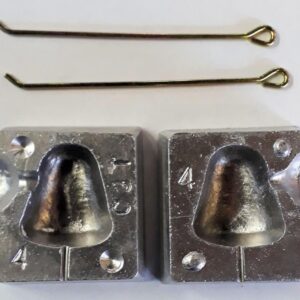
Gerrys Bucket Mould
£16.99 -

Gerrys Quick Drop Boat Lead Mould
£16.00 – £19.99 -
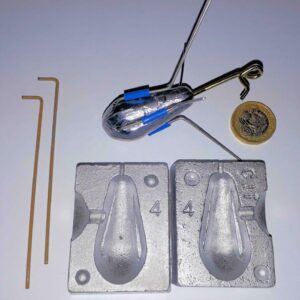
Gerrys Dumpy Distance Grip Moulds
£19.99 -
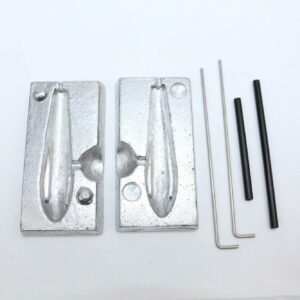
Gerrys Roller Grip Mould
£18.99 -
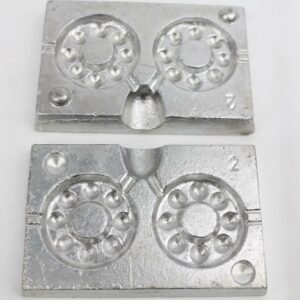
CJT Watch Lead Mould
£14.99 – £16.99 -
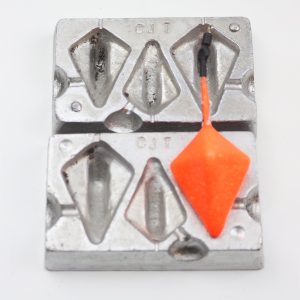
Gerrys 3 in 1 Pyramid Plus Mould
£16.99 -
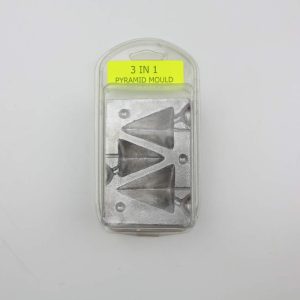
Gerrys 3 in 1 Pyramid Mould 2, 3 & 4oz
£16.99 -
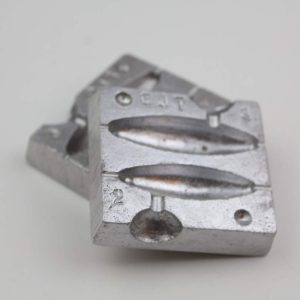
Gerrys 2 in 1 Barrel Mould 2 & 3oz
£16.99 -
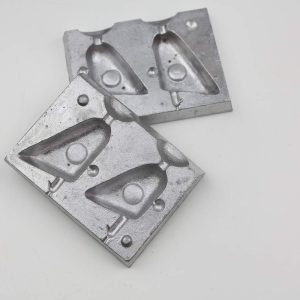
Gerrys 2 in 1 Jig Mould 125g & 150g
£16.99 -
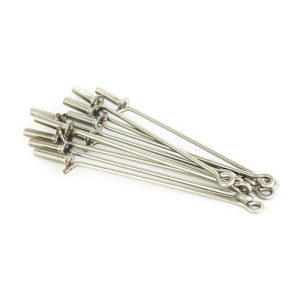
Gemini Sinker System Tail Wires
£2.60 -
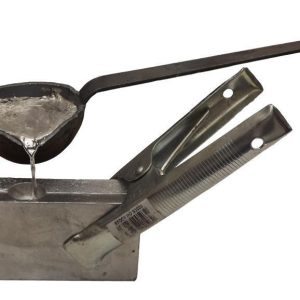
Gerrys Lead Pouring Ladle
£14.99 -
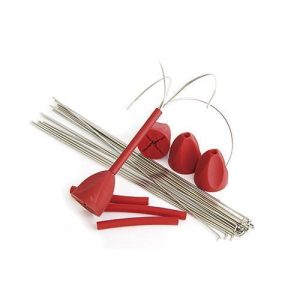
Gemini Sinker System Springy Fixed Grip Wire
£3.15
Fishing weights are used to sink the fishing line and bait to the sea, lake or river bed which in turn increases the chances of catching fish. One of the most popular types of fishing weights is the sea fishing weight used for fishing in saltwater seas. The most common materials used to make sea fishing weights are lead, tungsten, and tin. In this article, we will focus on moulds for sea fishing weights.
Moulds for sea fishing weights come in different shapes, sizes, and designs. Fishing weights come in different shapes such as round, teardrop, pyramid, and flat. Each shape has a different purpose and is used in different fishing situations. For example, flat weights are used in surf fishing to prevent the fishing line from being carried away by the waves. Pyramid weights are used in rough water to hold the bait in place and prevent it from being swept away by the current.
Moulds for sea fishing weights are made of different materials including aluminum, brass, and silicone. Aluminum and brass moulds are the most popular because they are durable and can withstand high temperatures. Silicone moulds, on the other hand, are popular because they are flexible and easy to use. They can also be used in both hot and cold temperatures.
The size of the mould is determined by the size of the desired weight. Moulds come in different sizes ranging from 1 oz to 16 oz. The weight of the moulds also varies depending on the size of the weight. As a general rule, smaller weights require smaller moulds while larger weights require larger moulds.
In addition to the shape and size, the design of the mould is also important. Some moulds have a flat base while others have a concave base. The shape of the base determines the way the weight sits on the sea bed. Flat-based weights are more stable while concave-based weights tend to roll around on the sea bed.
There are different methods of making sea fishing weights. The most common method is by melting lead and pouring it into the moulds. Lead is the most popular material used to make sea fishing weights because it is dense and heavy. It also has a low melting point which makes it easy to melt and pour. The lead is usually melted using a melting pot or a propane torch.
Other materials used to make sea fishing weights include tungsten and tin. Tungsten is denser than lead which means that it can be used to make smaller weights that are just as heavy as lead weights. Tin, on the other hand, is lighter than lead which means that it can be used to make larger weights that are not as heavy as lead weights.
Making sea fishing weights requires skill and experience. The lead needs to be melted at the right temperature and poured into the moulds at the right speed. If the lead is not melted properly, it can result in weak and brittle weights that break easily. Similarly, if the lead is poured too quickly, it can result in air pockets and uneven weights.
Moulds for sea fishing weights can be bought from fishing tackle shops or online. They can also be made at home using basic tools and materials. To make a mould at home, one needs to have a pattern of the desired shape of the weight. The pattern is then used to make a mould out of silicone or other suitable material. The mould is then used to make the fishing weight using the appropriate material.
In conclusion, moulds for sea fishing weights are an essential tool for any sea fisherman. They come in different shapes, sizes, and designs to suit different fishing situations. They can be made from different materials including aluminum, brass, and silicone. Making sea fishing weights requires skill and experience and can be done using different materials such as lead, tungsten, and tin. Moulds for sea fishing weights can be bought from fishing tackle shops or made at home.
100% Original product that covered warranty by the vendor.
You have the right to return your orders within 30 days.
Your orders are shipped seamlessly between countries.
Your payments are secure with our private security network.
